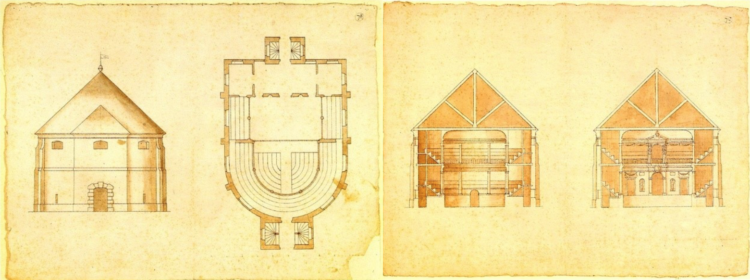In the early seventeenth century, indoor, ‘private’ playhouses located in small halls clustered around the heart of London became increasingly popular. In contrast to the outdoor, ‘public’ playhouses, these venues, which included Blackfriars, St Paul’s, the Whitefriars, and Porter’s Hall – and, a little further out, the Cockpit and Phoenix - allowed audiences to comfortably enjoy theatrical performances throughout the winter, in all kinds of weather. Other differences between public and private playhouses also emerged – the latter were more expensive to attend, for instance, and therefore attracted a more elite, exclusive audience. Attending a play at a private theatre could be an opportunity for social spectatorship and self-display – members of the audience could even pay more to sit on the stage itself, as visible to the rest of the audience as the actors.
Private playhouses also often employed boys’ companies of young actors, usually aged between seven and twenty, with a repertoire known for biting political satire and sharply witty comedy. Perhaps the youth of the boy actors cloaked them in an innocence which allowed them to present material that would be too risky in an adult company.
The plans shown here closely resemble what is known of the indoor theatres of the early seventeenth century. Although they are now thought to date to about 1660, they clearly look back to the earlier period of theatre design.











